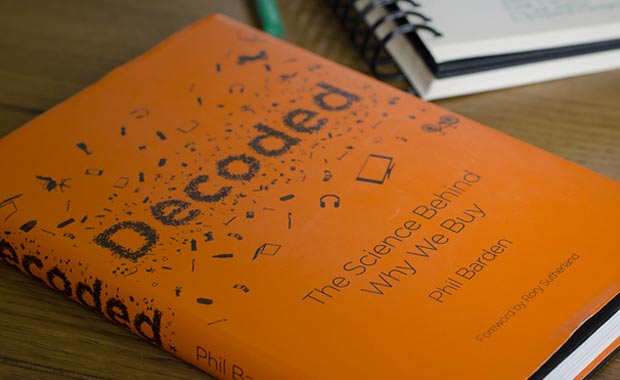There is an amazing fact near the start of Decoded, a new book from marketer Phil Barden. The average person takes 1.7 seconds to process the information in an advertisement in a magazine.
 But this does not really matter because all good marketing needs is this 1.7 seconds. People are programmed to respond quickly to the hundreds of thousands of things they “see” every day.
But this does not really matter because all good marketing needs is this 1.7 seconds. People are programmed to respond quickly to the hundreds of thousands of things they “see” every day.
If the marketing is right for what we are looking for, we will find the products we need. Even if we make mistakes, as we all do, all the time. But if we “were to reflectively think about every purchase decision in the supermarket, it would take so long to do our shopping that we would starve to death.”
Barden’s work builds on the field of behavioural economics pioneered by Nobel prize winner Daniel Kahneman, whose brilliant book Thinking Fast and Slow demonstrates that the way people behave is not as economists would like to think.
In a chapter on optimising the path to purchase, Barden shows how good marketing can change behaviour without changing minds. This is a must read chapter for retailers interested in laying out their shops to maximise sales.
In a 2006 paper two American academics showed how they could change what people ate by changing the order that food was presented in a canteen. For example:
- Broccoli was placed at the front and consumption rose by 10 per cent.
- Apples and oranges were put in a nice bowl and sales doubled.
- The ice cream freezer lid was changed to opaque and the number of students buying ice cream dropped from 30 per cent to 14 per cent.
- Including fruit in a fixed price lunch deal led to a 71 per cent increase in consumption. Making people pay more for cookies resulted in a 55 per cent fall in consumption.
- Putting the salad bar in front of the checkout tripled sales.
- Putting the chocolate milk behind the plain milk, making it difficult to reach, led to more students choosing plain milk.
“What these examples show is not exclusive to food consumption. They illustrate a general, fundamental result of decision science: that decisions are strongly influenced not only by what is presented but to a high degree by how it is presented,” writes Barden.
“Classical economic theory is unable to explain these effects because the objective value and the objective costs of the lunch item have not changed. Broccoli is broccoli, whether it is placed at the beginning or in the middle of the lunch line.”
As you read, ideas will spring forth for your shop. Consider a Snickers promotion, Barden cites. A sign “buy some for your freezer” resulted in average sales of 1.4 Snickers bars. A sign “buy 18 for your freezer” increased the average sale to 2.6. Think about it!
While at times this book is heavy on the science, it is a very rewarding read. A lot of the findings are common sense. But often we fail to apply common sense when we put our own objectives ahead of our customers’ objectives. Reading Decoded will help you make money.



Comments
This article doesn't have any comments yet, be the first!